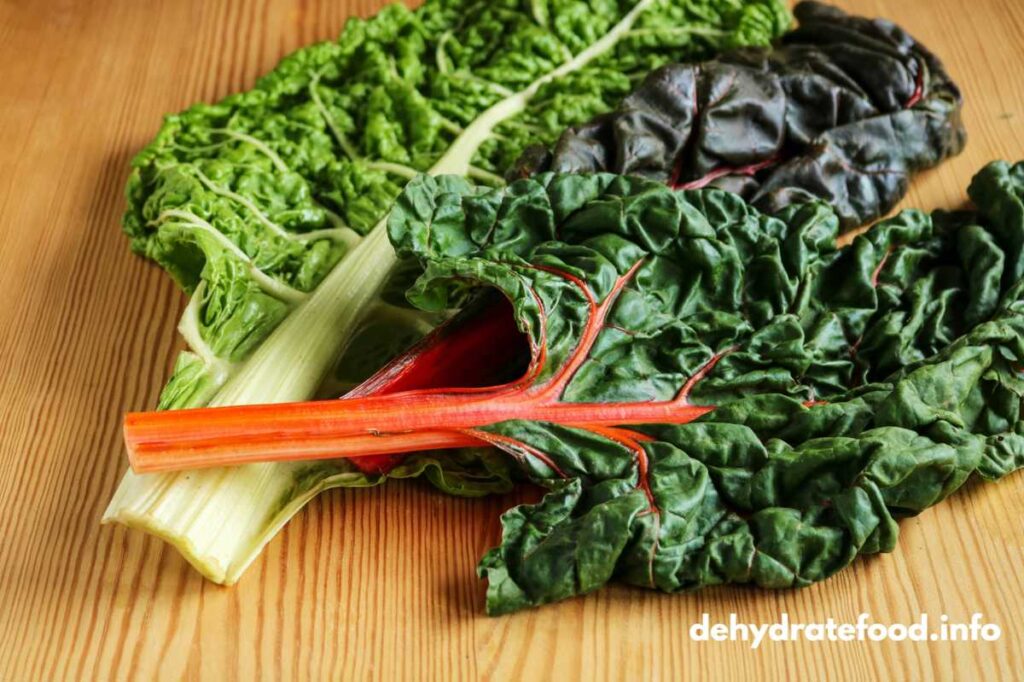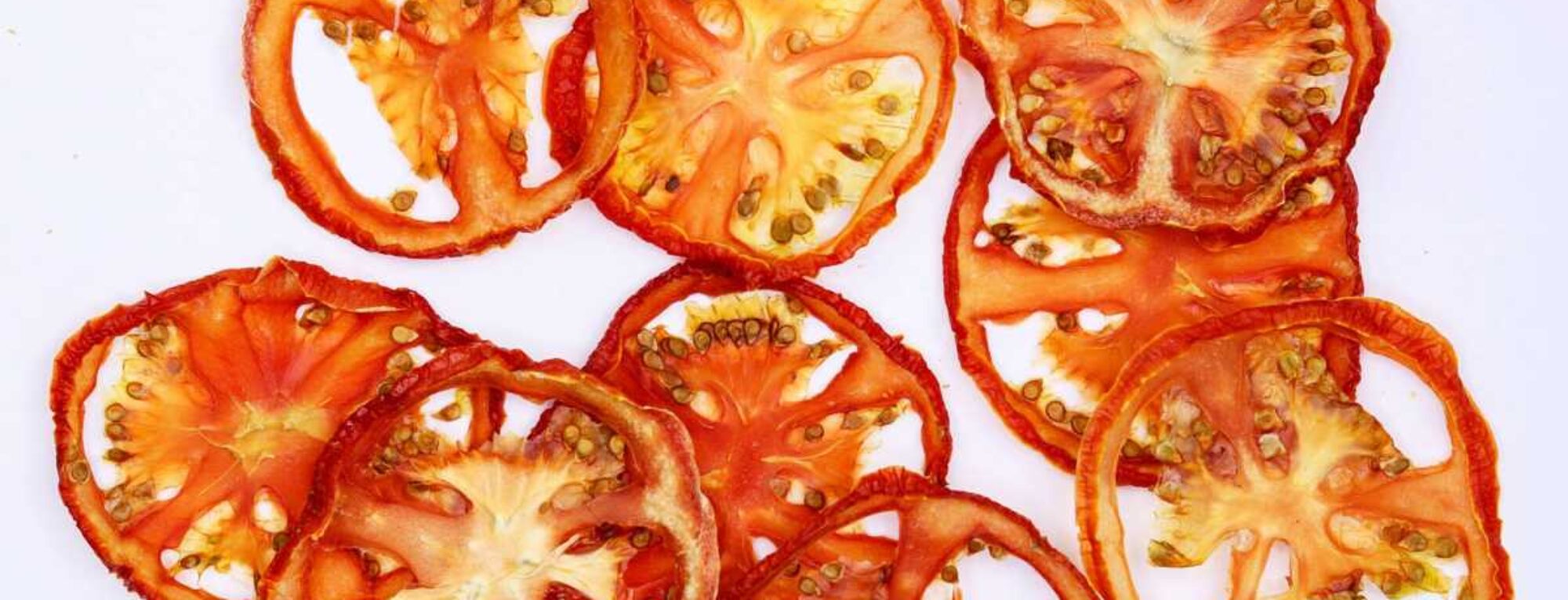
Dehydrated food is space-saving!
Dehydrated foods take up significantly less space than fresh produce, making it an excellent option for those with limited storage space. It does take less space than storing food in a freezer! This can be particularly useful for you who have a surplus of fruits or vegetables from your harvest.
Image: dried bellpepper
Dehydrating your food from the garden is a great way to preserve and enjoy your harvest for a long time. Dehydrated foods have a significantly longer shelf life compared to fresh food and take less space than canned and frozen food. There are many benefits to learning how to do this!
Before and after dehydration: mangold


How to dehydrate your harvest
| 1. Prepare your harvest | Start by selecting fresh and ripe produce from your garden. Wash, peel, and slice the fruits or vegetables into uniform pieces. If you’re drying herbs, remove any excess stems. |
| 2. Pre-treat (optional) | Some may benefit from pre-treatment to enhance flavor or prevent browning. This step is optional but can be done by blanching or dipping certain fruits, such as apples or peaches, in a solution of lemon juice and water. |
| 3. Arrange on dehydrator trays | Lay the prepared produce in a single layer on your dehydrator trays. Make sure the pieces are evenly spaced, as this allows for better airflow and ensures even drying. |
| 4. Set the temperature | Generally, fruits and vegetables should be dried at 125°F (52°C). If you’re drying herbs, lower temperatures around 95°F (35°C) are recommended to preserve flavors. |
| 5. Dehydration | Place the trays into the dehydrator and turn it on. Leave the food to dry for several hours, depending on the type of food, thickness of slices, and humidity levels. Rotate the trays occasionally for even drying. |
| 6. Check for dryness | Periodically check the produce for dryness. The drying time will vary depending on the type of produce and humidity levels. Fruits and vegetables should be leathery or slightly brittle, while herbs should be crumbly. |
| 7. Let cool | Once the produce is dried, remove it from the dehydrator and let it cool to room temperature. |
| 8. Store properly | After conditioning, transfer the completely cooled and dry produce to airtight containers or sealable bags. Store them in a cool, dark place, away from direct sunlight and humidity. Properly dehydrated produce can last for years. |
Long shelf life
By removing the moisture, the enzymatic reactions that cause spoilage are slowed down, allowing your harvest to be stored for months or even years if properly stored.
Image: Dehydrated apples


More flavour with dehydration
Dehydration intensifies the flavours of fruits, vegetables, and herbs, resulting in a more potent and concentrated taste. This can enhance the culinary experience when using dehydrated produce in various recipes.
Image: broth made from mushrooms and vegetables
Keep the nutrients
While dehydration does cause a minor loss of some heat-sensitive vitamins, it can actually help preserve essential nutrients like fiber, minerals, and certain antioxidants. Compared to canning or boiling, which can leach out nutrients.
Image: carrots in a dehydrator



